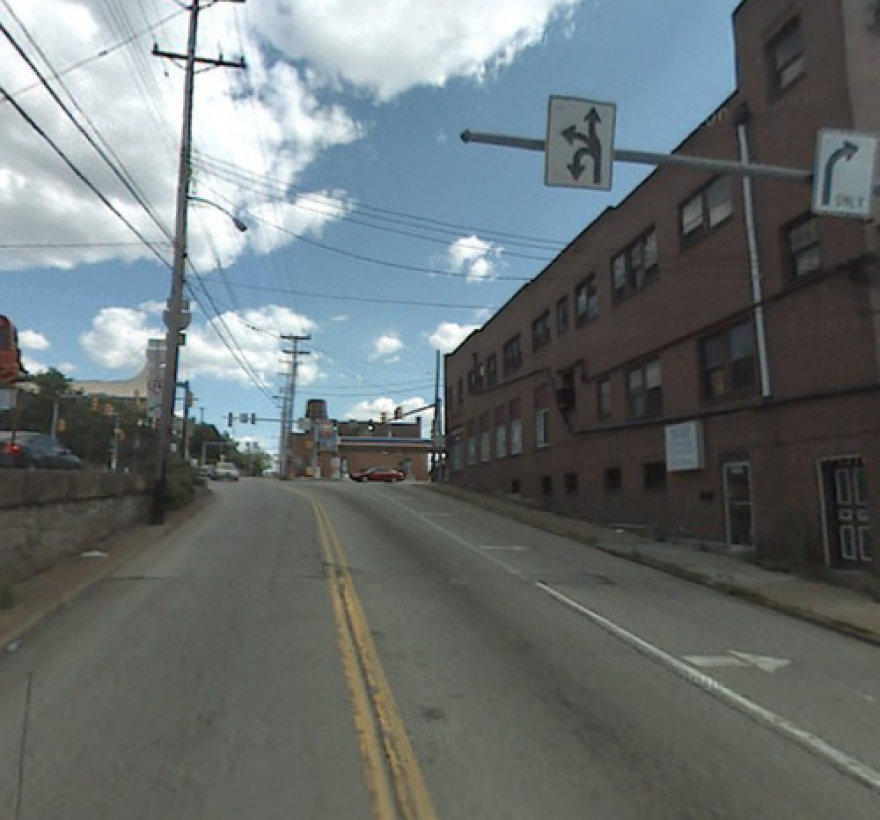Pittsburgh’s topography is pretty unique as far as cities go. It's essentially a peninsula surrounded by mountains. And with the city's numerous bridges and triangular shape, facilitating efficient traffic patterns has long been a challenge for the region.
Pittsburgher Phil Anderson runs the popular blog The Nonsensical Roads of Pittsburgh, where he records his observations about bizarre traffic and road layouts. He's driven in cities throughout the world and seems to find Pittsburgh infrastructure both amusing and frustrating.
“You have stages of driving on Pittsburgh roads," he said. "There’s anger, grief, and eventually you have acceptance.”
Nonsensical Roads of Pittsburgh's common causes of traffic:
- Sharp curves, characteristic of the difficult exits on Highland Park Bridge
- Lanes ending, especially on roads with sporadic on-street parking
- Steep hills
- Changes in speed
- Tunnels
- Quick merge areas such as Pittsburgh's Stop Signs of Doom
- Confusing road conditions such as this street sign in Edgewood

Anderson is admittedly not a civic engineer, but he does provide some possible solutions to these traffic problems on his blog.

Despite all the road complaints, he finds that as far as driver demeanor goes, "people are very friendly and gracious here ... because we're all in this together."
Quirks of Pittsburgh driving from the Nonsensical Roads of Pittsburgh:
- "The Pittsburgh left is taken, not given." Failure to act quickly on this illegal immediate left turn at a stop light could result in an accident or really angry Pittsburgher.
- The Pittsburgh straight has several definitions. Some say it is when a twisty road requires the vehicle to turn in order to stay on the same road, while others define it as "your" fastest way to reach a destination, often through zig-zagging around back streets.
- No turn on red signs "have no rational explanation," according to Anderson. Sometimes there is a sign at an intersection where the view is not at all obstructed, whereas other times an obstructed view will have no preventative sign.
- Five and six-way intersections appear in areas like Squirrel Hill where drivers must decide if they want to be in the U-turn lane, the sharp left lane or the "kind of" left lane.
The plight of PennDOT and the Pittsburgh Department of Public Works
Behind the scenes, Patrick Hassett, assistant director of the Pittsburgh Public Works Department overseeing the Bureau of Transportation, and Dan Cessna, the Pennsylvania Department of Transportation's local district executive, work hard to hear all transportation and road improvement suggestions. But Hassett says the history of the city's development contributes to the streets' odd layout.
"It was a different world when many of these roads were laid out," he explained "They were not designed for motor vehicles."
Hassett and Cessna both point to crumbling bridges as the main priority for the region's transportation organizations, but they also see many complaints about road maintenance. The officials encourage residents to utilize Pittsburgh's 3-1-1 services if they want to report any infrastructure problems.
See what listeners had to say about this topic on twitter:
@esspgh Biggest gripe? By the time you see a sign, you've already driven past the exit.
— Jan P. (@janpz) March 11, 2014
@esspgh @905wesa 5 way intersections. Lanes that spontaneously turn into turn only lanes. Parked cars in bike lanes and on narrow streets.
— Snoozin in the sunlight (@MaybeLaterSon) March 11, 2014
@esspgh I always thought on ramps were "acceleration lanes" why do we have stop signs at the end of on ramps? (Like outbound 376 from sqhill
— DBtheTD (@dboevers) March 11, 2014












